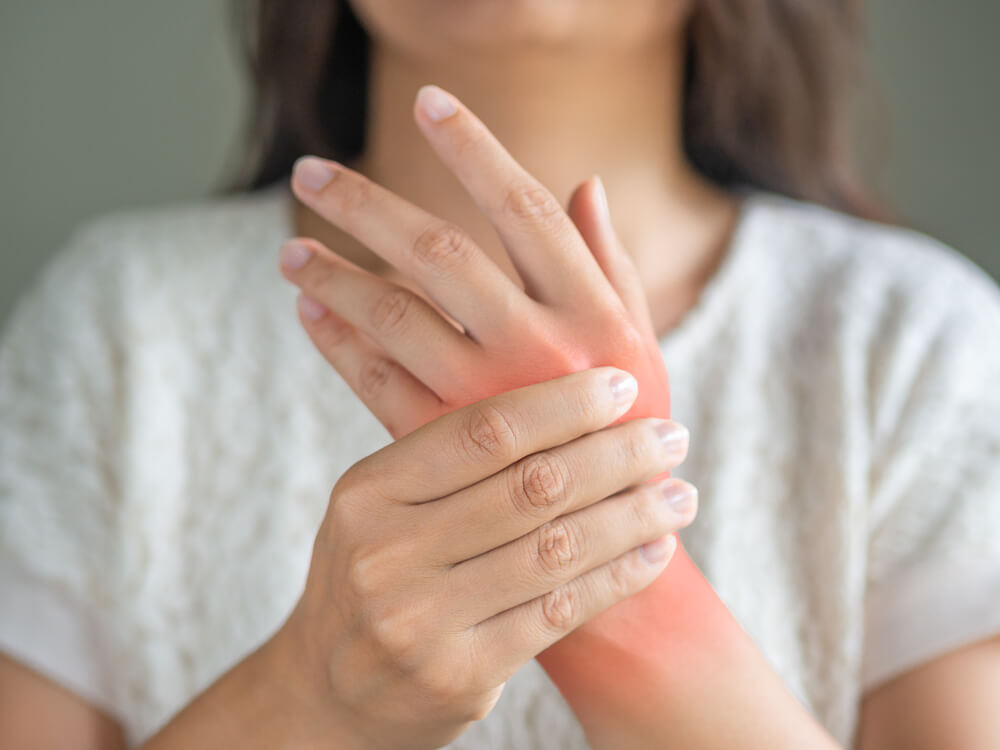How Steam Showers May Alleviate Arthritis Pain
If you have arthritis, you know how much discomfort it can bring. More than 23% of Americans live with some form of this condition. Millions must deal with severe, recurring joint pain.
While following the course of treatment recommended by your doctor, you may want an additional option for relieving pain and discomfort. A steam shower may be an excellent choice.
A steam shower will not treat the underlying disorder but may provide some relief from the pain associated with arthritis. Ultimately, there is no substitute for consulting with your physician about the best course of action for you.
What Is a Steam Shower?
A steam shower is an enclosed space equipped with a steam system that heats water until it vaporizes. The system releases steam through the steam outlet to create a humid and relaxing environment.
While many believe that steam showers are nearly identical to saunas, the concepts differ. The main differences between a steam shower and a sauna are:
- Temperatures – steam shower temperatures range from 105°F and 115°F while sauna temperatures are much higher (160°F to 200°F)
- Humidity – humidity in a steam shower is around 100 percent, while in a sauna, it's 10 to 20 percent.
- Space – saunas generally take up a large space in your home, while steam systems fit in a traditional shower cabin.
- Materials – saunas are usually made of wood, while steam showers require waterproof and non-porous materials (i.e. ceramic tiles or glass blocks)
Both a steam shower and a sauna may provide relaxation and potential health benefits. However, steam showers offer a more moist and gentle heat experience, while saunas give a dry and intense heat experience.
Might a Steam Shower or Sauna Be Better at Alleviating Arthritis Pain?
While both a steam shower and sauna may offer some relief for some arthritis pain, steam showers may provide more avenues to do so. Steam showers may be better for athritis pain due to:
Moist Heat
Unlike saunas, steam showers generate moist heat. According to a study published in the Journal of Clinical Medicine Research, moist heat penetrates deep tissue faster than dry heat. This gives steam showers more potential to relieve pain and soreness.
When moist heat penetrates the skin, it may soothe and relax muscles. This, in turn, may reduce pain and stiffness related to arthritis.
Improved Circulation
The high humidity inside the steam shower may cause more blood to flow to the skin. This increases the heart rate and speeds up blood circulation. As blood circulates faster, it promotes the delivery of nutrients to joints and muscles. This may promote healing and reduce painful sensations.
Steam showers may act as a controlled way to get the benefits of hyperthermia (abnormally high body temperature) without experiencing the downsides. This is only possible if you don't overuse the steam shower.
Detoxification
High temperatures and humidity stimulate abundant sweating. Sweat is your body's cooling down mechanism. The higher the heat and humidity, the harder your body tries to maintain its normal temperature.
When you are sweating in a steam shower, toxins from your body may come out together with the sweat. Some potential excreted toxins include PCBs (polychlorinated biphenyls), bisphenol, phthalates, pesticides, flame retardants, mold, and mycotoxins.
Toxins can cause inflammation, which in turn may worsen your arthritis symptoms. By detoxifying, you can help prevent inflammation and give your body more opportunities for healing.

How Do Different Types of Arthritis React Interact with Steam?
Steam may provide symptom relief that varies depending on the type of arthritis you have. It may be especially beneficial for osteoarthritis, rheumatoid arthritis, and Ankylosing Spondylitis.
Arthritis is a medical condition caused by inflammation and stiffness in the joints. Symptoms include pain, swelling, and reduced mobility. The fundamental causes of this disorder are joint wear and tear, autoimmune disorders, or injury. Many types of arthritis exist. The most common are osteoarthritis and rheumatoid arthritis (RA).
Osteoarthritis
Osteoarthritis is the most common type of arthritis caused by joint wear and tear. Symptoms of this condition include pain, stiffness, tenderness, and reduced mobility.
A steam shower may improve blood circulation, reducing muscle stiffness around the affected joints. This may relieve pain and help with mobility. A study published in the Journal of Physical Therapy Science demonstrated that heat and humidity may help improve clinical symptoms and walking abilities of patients with osteoarthritis.
Rheumatoid Arthritis
Rheumatoid Arthritis is an autoimmune condition that occurs when the immune system begins attacking healthy tissues surrounding the joint. The symptoms of this condition include pain, tenderness, and joint stiffness.
The heat from the steam room combined with cold showers may help reduce inflammation and stiffness, relax muscles, and relieve pain.
Ankylosing Spondylitis
Ankylosing spondylitis is a chronic inflammatory arthritis that primarily affects the spine and sacroiliac (the link between the pelvis and lower spine) joints. It causes inflammation, pain, and stiffness. Over time, this condition can lead to the fusion of the affected joints.
Heat and humidity may help relax muscles around the spine and alleviate discomfort. A cold shower after a steam bath may also help reduce inflammation.
How Might You Use a Steam Shower for Arthritis Management
To get the full benefits of a steam shower, you need to do it the right way.
Dos:
- Take all your clothes off – the key benefits of the steam shower are possible because your skin opens up its pores. Make sure the entire skin surface is ready to do so.
- Go in clean – take a regular shower before the steam shower so your skin can breathe.
- Use a cold shower – for some types of arthritis, combining a steam shower with a cold shower may maximize pain relief.
Don'ts:
- Don't take the cell phone with you – you can achieve maximum relaxation when you take your mind off the problems that tend to scream at you from your mailbox, messengers, and news feeds. Advanced steam showers come with music therapy so you can still enjoy relaxing tunes.
- Don't go in after a hearty meal – if your stomach is full, your body is busy digesting it instead of directing the blood flow to your skin.
- Don't overdo it – the ideal steam shower time is 15 to 20 minutes. Staying there too long could have a negative effect. Listen to your body. If you have to leave earlier, it's fine too.
Before stepping inside, talk to your doctor if you have:
- Low blood pressure
- Coronary artery disease
- History of stroke
- History of transient ischemic attack
- Heart rhythm problems
Be smart about using a steam shower. Its benefits are only available to those who take a responsible approach to their health.
Is a Steam Shower a Good Option for Arthritis Patients?
A steam shower may help people with arthritis manage some symptoms, including pain and stiffness. Heat and humidity encourage muscle relaxation and may improve mobility.
Overall, steam showers and baths may complement the course of treatment recommended by your healthcare provider.
Consult your doctor about using a steam shower for symptom management. They can give valuable advice about leveraging this option responsibly.

 SEARCH
SEARCH
 FIND A DEALER
FIND A DEALER







